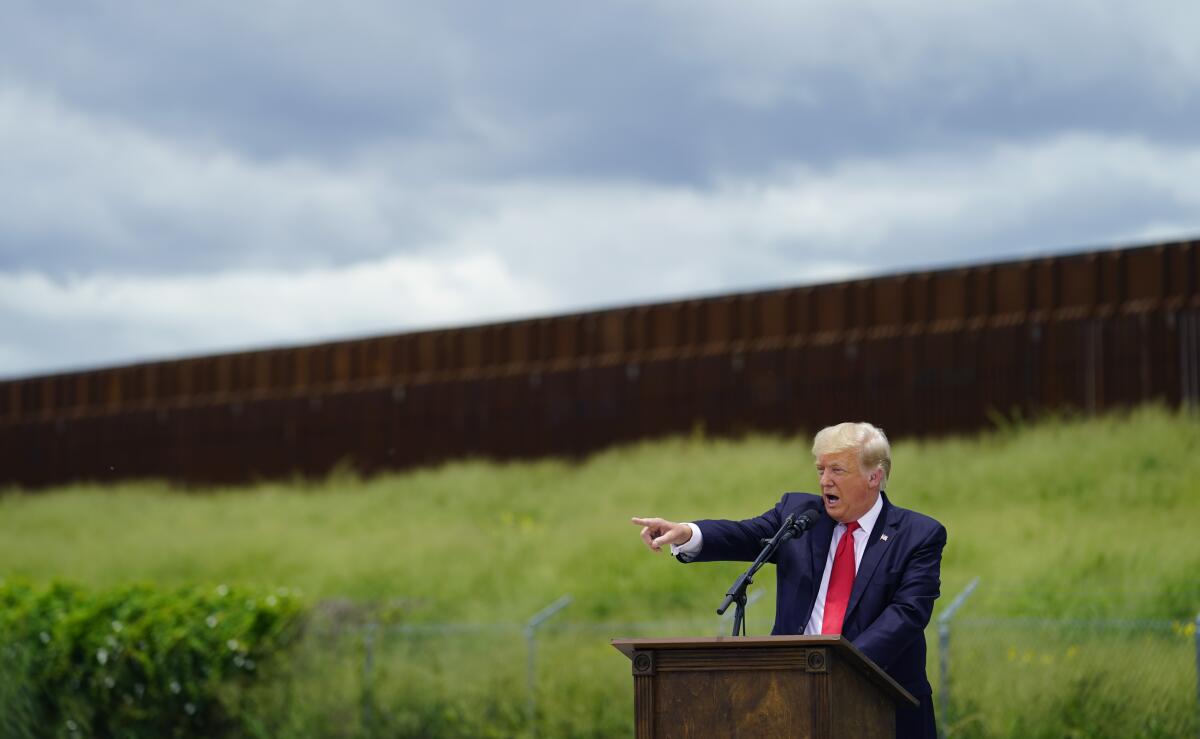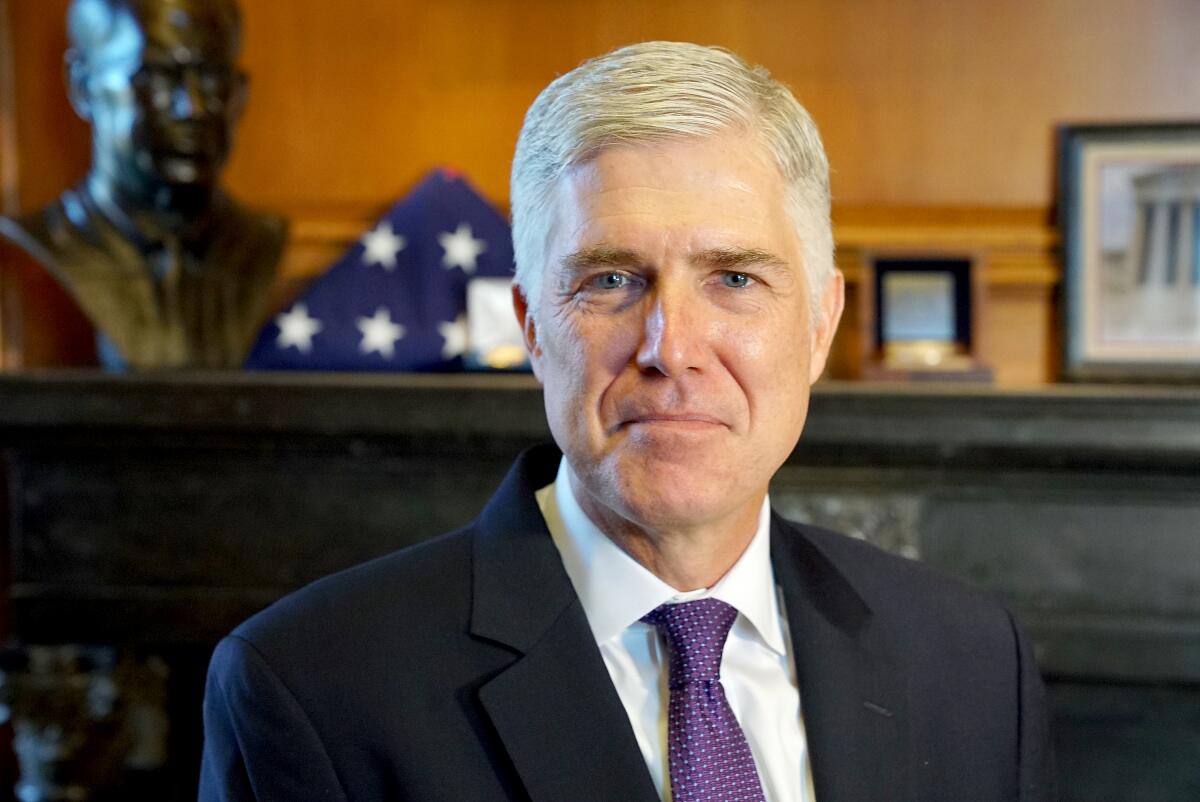Boiling Point: Trump can’t stop clean energy. But he can slow it down

The question isn’t whether the energy transition will happen. It’s how quickly we can shift from lung-damaging, planet-warming fossil fuels to clean energy, and how much harm we can prevent in the process.
That’s why President Biden is rushing to get billions of dollars in clean energy loans finalized before President-elect Trump takes office, per Canary Media’s Akielly Hu. It’s also why the owner of a major Los Angeles oil field is suing California over a law meant to force the company to cease production, as The Times’ Tony Briscoe reports.
This isn’t a zero-sum game, where one side wins and the other loses. Climate advocates know that the more heat-trapping carbon pollution we keep out of the atmosphere, the fewer people suffer and die. Oil and gas executives know that the more they drill and pump, the more they profit, even if they’re eventually forced to stop.
You're reading Boiling Point
Sammy Roth gets you up to speed on climate change, energy and the environment. Sign up to get it in your inbox twice a week.
You may occasionally receive promotional content from the Los Angeles Times.
Fortunately, there’s been some good news lately:
- The U.S. is manufacturing and installing more solar panels than ever before. (Eric Wesoff, Canary Media)
- A law designed to protect California taxpayers from paying to plug abandoned oil wells — and shift responsibility back to oil companies — may actually be working. (Aaron Cantú, Capital & Main)
- Colorado is catching up with California on clean vehicle sales and leases — which is awesome, because we won’t fix the climate if it’s just Californians driving electric cars. (Sam Brasch, CPR News)
- UCLA will get California’s first electric vehicle-charging roadway, ahead of the 2028 Olympics in Los Angeles. Underground coils will charge electric buses. (Colleen Shalby, L.A. Times)
As usual, though, the clean energy transition faces plenty of obstacles.
There are few bigger climate stories these days, for instance, than the rapid expansion of data centers to provide computing power for artificial intelligence, which in turn is driving huge new electricity demand — including from fossil fuels. Eventually I’ll write about why solving this problem isn’t as easy as tech giants snapping their fingers and shouting, “Nuclear!” For now, this story by Canary Media’s Jeff St. John offers an excellent primer.

We should also talk about the Trump transition. Here’s what’s happening in Washington, D.C.:
- The Biden administration has officially approved Idaho’s largest wind farm. But there are reasons to believe Trump’s appointees could overturn the decision. (Associated Press)
- The Biden administration has worked hard to direct climate and environmental investments to low-income neighborhoods and communities of color, where there are long histories of pollution and injustice. It’s likely Trump’s appointees will end those efforts. (Amudalat Ajasa and Anna Phillips, Washington Post)
- California Gov. Gavin Newsom wants the state Legislature to approve $25 million to defend against Trump’s anticipated attacks on climate protections, civil rights and abortion access. (Libor Jany, L.A. Times)
- Even if Congress doesn’t touch the Endangered Species Act, there’s a lot the Trump administration could do to limit protections for wildlife and plants. (Michael Doyle, E&E News)
Speaking of wildlife, the Arizona Republic’s Brandon Loomis wrote about new research exploring which animals have been able to pass through the sections of U.S.-Mexico border wall that President Trump built during his first term — and how possible future sections could be constructed to limit impediments to wildlife migration.
Elsewhere in D.C., Supreme Court Justice Neil M. Gorsuch recused himself from a potentially momentous case involving a Colorado oil train, after congressional Democrats cited his ties to Denver oil billionaire Philip Anschutz. Details here from CNN’s John Fritze. (For background on why the case could have major consequences for U.S. environmental law, see this story by the Colorado Sun’s Jason Blevins.)

In other fossil fuel news:
- The L.A. Department of Water and Power has agreed to pay San Fernando Valley residents nearly $60 million after hiding a methane leak from a gas-fired power plant in the San Fernando Valley. Sun Valley and Pacoima residents said they suffered headaches, nausea and nosebleeds. (Clara Harter, L.A. Times)
- Environmental groups sued California’s Kern County over a carbon capture project that they worry would do more to prolong oil and gas production than fight climate change. (John Cox, Bakersfield Californian)
- L.A. prosecutors filed criminal charges against Phillips 66, alleging two instances of dumping contaminated wastewater from a South Bay oil refinery into the county sewer system. (Tony Briscoe, L.A. Times)
- The FBI “has been investigating a longtime Exxon Mobil consultant over the contractor’s alleged role in a hack-and-leak operation” targeting Exxon’s critics. (Raphael Satter and Christopher Bing, Reuters)
Again, fossil fuel companies can’t stop the energy transition — clean power is too cheap, public support too widespread. But that doesn’t mean tackling all of our energy problems will be easy — far from it.
A few final examples:
- Newsom wants to find out if adding more ethanol to gasoline could lower fuel prices. Some experts warn there could be serious water pollution consequences as far away as Iowa. (Nina Elkadi, Inside Climate News)
- California’s major investor-owned utilities — Southern California Edison, Pacific Gas & Electric and San Diego Gas & Electric — have spent billions of dollars upgrading their power lines to limit wildfire ignitions. Those investments have saved lives, but are they worth the cost of higher power bills? Some observers wonder — especially since higher bills could reduce demand for electric vehicles. (Alejandro Lazo, CalMatters)
On that note, here’s what’s happening around the West:
WATER, WATER EVERYWHERE

Where’s Herbert Hoover when you need him?
Before he became infamous for serving as president during the early years of the Great Depression, he was the U.S. Commerce secretary who oversaw negotiation of the 1922 Colorado River Compact — which still governs the river. Alas, the century-old compact is increasingly butting up against climate-fueled megadrought, growing cities and water-thirsty farm empires — and the seven states that depend on the river are at an impasse.
As my L.A. Times colleague Ian James reports, the interstate rules that currently apportion Colorado River water cutbacks during dry years are set to expire in 2026. And an annual conference in Las Vegas that usually yields fruitful discussions was instead dominated by accusations and concerns about possible litigation.
Things got so bad in Sin City that California’s lead Colorado River negotiator accused other states of seeking to build “pipelines to more golf courses,” which prompted Wyoming’s lead negotiator to calls those kinds of claims “bullshit,” per the Arizona Republic’s Brandon Loomis.
Not that I really think Hoover (for whom Hoover Dam is named) could have solved the problem. He was able to negotiate a deal in part by pretending there was a lot more water in the river than there actually was.
It’s not just the Colorado River feeling the pinch from global warming and overuse:
- California is telling water agencies to expect just 5% of their allocations in 2025 after hot, dry conditions last summer left parched soils, although there’s a good chance this number goes up. (Ian James, L.A. Times)
- In an unusual move, the U.S. Environmental Protection Agency urged California officials to keep more water in the Sacramento-San Joaquin River Delta, to protect fish important to tribes. (Ari Plachta, Sacramento Bee)
- Residents of a Washington city voted to give enforceable legal rights to the Snohomish River. Individuals and groups can now bring lawsuits to keep the ecosystem healthy. (Katie Surma, Inside Climate News)
Before we close out the water section, let’s talk about salt lakes:
- Utah is getting $50 million from President Biden’s Inflation Reduction Act to restore the Great Salt Lake. The state’s entire congressional delegation voted against the climate bill. (Megan Banta, the Salt Lake Tribune)
- In California’s Imperial County, it’s not just dust from the Salton Sea’s drying lakebed polluting the air. Crop fertilizers may be another major smog contributor, a new study finds. (Tony Briscoe, L.A. Times)
ON THE LANDSCAPE

Let’s start with a reminder that cities are landscapes too.
Here in Los Angeles — one of two megacities where big cats roam the streets, the other being Mumbai — a new study finds that mountain lions living near popular recreation areas in the Santa Monica Mountains spend more time hunting and carrying out other activities at night, to avoid humans, as my L.A. Times colleague Lila Seidman reports. It’s a helpful but potentially costly adaptation for the beloved creatures, Lila writes.
Meanwhile, efforts to secure a star on the Hollywood Walk of Fame for L.A.’s most famous mountain lion, the late P-22, have thus far fallen short, per The Times’ Jeanette Marantos.
In other wildlife news, the National Park Service has chosen the health of Point Reyes’ tule elk over the interests of nearby cattle ranchers. After years of debate, fencing that prevented elk from accessing food and competing with cattle for food will be removed, my colleague Summer Lin reports.
Elsewhere on our public lands and waters:
- Another gold rush is underway in the Mojave Desert. Nearly 130 years after gold was discovered in Kern County’s Rand District, small-scale prospectors are once again staking claims. (Jack Flemming, L.A. Times)
- Environmental groups say the San Francisco Bay Area’s first regional sea level rise plan doesn’t do enough to protect undeveloped shoreline. Business groups feel differently. (Ezra David Romero, KQED)
- A U.S. Forest Service program encourages people to cut down Christmas trees — both because doing so can reduce wildfire risk and because it gets folks invested in protecting public lands. (Noah Haggerty, L.A. Times)
Lastly, I enjoyed this short video by The Times’ Safi Nazzal about how the world’s most beautiful Taco Bell, on the California coast in San Mateo County, is experiencing sea level rise. Even Taco Bell is not immune.
ONE MORE THING

Food loss and food waste are responsible for up to 10% of global climate pollution — and Americans waste half a billion dollars’ worth of groceries on Thanksgiving alone. I know we’re a few weeks removed from the holiday, but this is a year-round issue. Here are some ideas for how we can do better, from my colleague Kate Linthicum.
On a related note, a new law in California will ban “sell by” dates on food labels, to reduce waste. Here’s advice on how to navigate grocery stores once the law takes effect, from The Times’ Sandra McDonald.
See you on Thursday.
This is the latest edition of Boiling Point, a newsletter about climate change and the environment in the American West. Sign up here to get it in your inbox. Or open the newsletter in your web browser here.
For more climate and environment news, follow @Sammy_Roth on X and @sammyroth.bsky.social on Bluesky.
Toward a more sustainable California
Get Boiling Point, our newsletter exploring climate change, energy and the environment, and become part of the conversation — and the solution.
You may occasionally receive promotional content from the Los Angeles Times.




